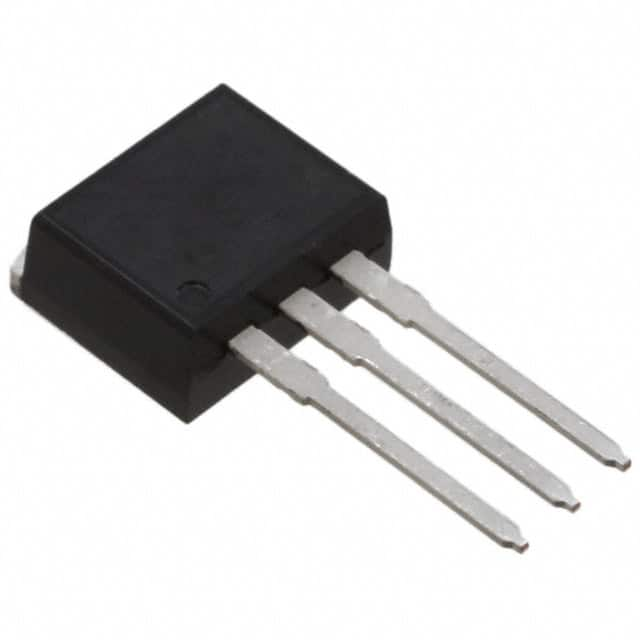FQI10N60CTU: Product Overview and Analysis
Introduction
The FQI10N60CTU is a power MOSFET belonging to the category of electronic components. This device is widely used in various applications due to its unique characteristics and functional features. In this entry, we will provide an overview of the FQI10N60CTU, including its basic information, specifications, pin configuration, functional features, advantages and disadvantages, working principles, application field plans, and alternative models.
Basic Information Overview
- Category: Power MOSFET
- Use: The FQI10N60CTU is commonly used as a switching device in power supply circuits, motor control, and other high-power applications.
- Characteristics: This MOSFET exhibits low on-state resistance, high switching speed, and low gate charge, making it suitable for high-efficiency power conversion.
- Package: The FQI10N60CTU is typically available in a TO-220 package, which provides thermal efficiency and ease of mounting.
- Essence: The essence of the FQI10N60CTU lies in its ability to handle high currents and voltages with minimal power loss.
- Packaging/Quantity: It is commonly packaged in reels or tubes, with varying quantities based on manufacturer specifications.
Specifications
- Voltage Rating: 600V
- Current Rating: 10A
- On-State Resistance (RDS(on)): Typically in the range of a few ohms
- Gate-Source Voltage (VGS): ±20V
- Operating Temperature Range: -55°C to 150°C
- Package Type: TO-220
Detailed Pin Configuration
The FQI10N60CTU typically consists of three pins: 1. Gate (G): Used to control the switching operation of the MOSFET. 2. Drain (D): Connected to the load or power supply in the circuit. 3. Source (S): Connected to the ground or return path of the circuit.
Functional Features
- Low On-State Resistance: Enables efficient power transfer and reduced heat dissipation.
- High Switching Speed: Facilitates rapid switching operations, suitable for high-frequency applications.
- Low Gate Charge: Allows for precise and responsive control of the MOSFET.
Advantages and Disadvantages
Advantages
- High efficiency in power conversion applications
- Fast switching speed for improved performance
- Low power dissipation leading to reduced heat generation
Disadvantages
- Susceptible to voltage and current spikes if not properly protected
- Sensitive to electrostatic discharge (ESD) and overvoltage conditions
Working Principles
The FQI10N60CTU operates based on the principle of field-effect transistors, where the voltage applied to the gate terminal controls the flow of current between the drain and source terminals. By modulating the gate-source voltage, the MOSFET can be switched on and off, allowing for efficient power regulation and control.
Detailed Application Field Plans
The FQI10N60CTU finds extensive use in the following application fields: - Switched-mode power supplies - Motor control circuits - Inverters and converters for renewable energy systems - High-power LED lighting systems - Audio amplifiers and power management units
Detailed and Complete Alternative Models
Some alternative models to the FQI10N60CTU include: - IRF840: A similar power MOSFET with comparable voltage and current ratings. - STP16NF06: Offers similar characteristics and performance in power control applications. - FQP30N06L: Suitable for lower power applications with similar package type and pin configuration.
In conclusion, the FQI10N60CTU power MOSFET serves as a crucial component in various electronic systems, offering high efficiency, fast switching, and reliable performance. Its application spans across diverse industries, making it a versatile choice for power regulation and control.
Word Count: 587
قم بإدراج 10 أسئلة وإجابات شائعة تتعلق بتطبيق FQI10N60CTU في الحلول التقنية
What is FQI10N60CTU?
- FQI10N60CTU is a 600V N-channel MOSFET designed for high-speed switching applications.
What are the key features of FQI10N60CTU?
- The key features include a low on-resistance, fast switching speed, and a high avalanche energy capability.
What are the typical applications of FQI10N60CTU?
- Typical applications include power supplies, motor control, lighting ballasts, and other high-frequency switching solutions.
What is the maximum voltage rating for FQI10N60CTU?
- The maximum voltage rating is 600V.
What is the on-resistance of FQI10N60CTU?
- The on-resistance is typically very low, which is beneficial for minimizing power losses in high-current applications.
Does FQI10N60CTU require a heatsink for operation?
- It depends on the specific application and the amount of power dissipation. In some cases, a heatsink may be necessary to ensure proper thermal management.
What is the gate charge of FQI10N60CTU?
- The gate charge is relatively low, allowing for fast and efficient switching.
Can FQI10N60CTU be used in automotive applications?
- Yes, it can be used in automotive systems such as electronic control units (ECUs), motor drives, and LED lighting.
Is FQI10N60CTU suitable for high-frequency switching?
- Yes, its fast switching speed and low on-resistance make it well-suited for high-frequency applications.
Where can I find the detailed datasheet for FQI10N60CTU?
- The detailed datasheet can be found on the manufacturer's website or through authorized distributors.


